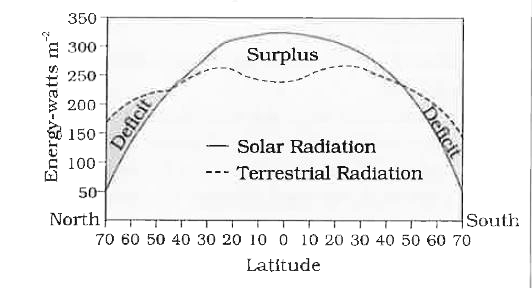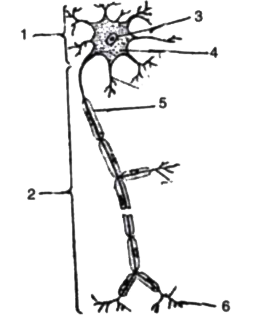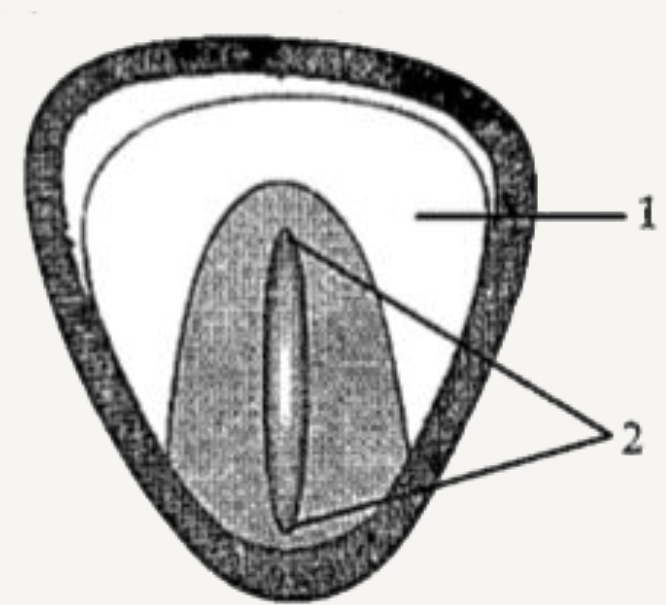Study the diagram given below and answer the questions that follow:
(i) Write a short notes on the Crust and Mantle?
(ii) How does you know about the Core? Discuss.

(i) The Crust: It is the outermost solid part of the earth. It is brittle in nature. The thickness of the crust varies under the oceanic and continental areas. Oceanic crust is thinner as compared to the continental crust. The mean thickness of oceanic crust is 5 km whereas that of the continental is around 30 km. The continental crust is thicker in the areas of major mountain systems. It is as much as 70 km thick in the Himalayan region. It is made up of heavier rocks having density of 3 g/cm3. This type of rock found in the oceanic crust is basalt. The mean density of material in oceanic crust is 2.7 g/cm. The Mantle: The portion of the interior beyond the crust is called the mantle. The mantle extends from Moho.s discontinuity to a depth of 2,900 km. The upper portion of the mantle is called asthenosphere. The word astheno means weak. It is considered to be extending upto 400 km. It is the main source of magma that finds its way to the surface during volcanic eruptions. It has a density higher than the crusts (3.4 g/cm3). The crust and the uppermost part of the mantle are called lithosphere. Its thickness ranges from 10200 km. The lower mantle extends beyond the asthenosphere. It is in solid state. As indicated earlier, the earthquake wave velocities helped in understanding the existence of the core of the earth. The coremantle boundary is located at the depth of 2,900 km. The outer core is in liquid state while the inner core is in solid state. The density of material at the mantle core boundary is around 5 g/cm3 and at the centre of the earth at 6,300 km, the density value is around 13g/cm3. The core is made up of very heavy material mostlyconstituted by nickel and iron. It is sometimes referred to as the nife layer.
Topper's Solved these Questions
- INTERIOR OF THE EARTH BOOK - FULL MARKSCHAPTER - INTERIOR OF THE EARTH EXERCISE - ADDITIONAL QUESTIONS WITH ANSWERS -VI. Long Answer Type Questions
6 Videos
- INTERIOR OF THE EARTH BOOK - FULL MARKSCHAPTER - INTERIOR OF THE EARTH EXERCISE - ADDITIONAL QUESTIONS WITH ANSWERS -VII. HOTS Questions
2 Videos
- INTERIOR OF THE EARTH BOOK - FULL MARKSCHAPTER - INTERIOR OF THE EARTH EXERCISE - ADDITIONAL QUESTIONS WITH ANSWERS -IV. Short Answer Type Questions
11 Videos
- INDIA-LOCATIONBOOK - FULL MARKSCHAPTER - INDIA-LOCATIONEXERCISE - TEST ASSIGNMENT
7 Videos
- INTRODUCTION TO AERIAL PHOTOGRAPHSBOOK - FULL MARKSCHAPTER - INTRODUCTION TO AERIAL PHOTOGRAPHSEXERCISE - ADDITIONAL QUESTION WITH ANSWERS (V. Viva Questions)
7 Videos
Similar Questions
Study the diagram given below and answer the following questions.

View SolutionStudy the diagram given below and answer the questions that follow :
What is emulsification?
View SolutionStudy the diagram given below and answer the questions that follow :

What does the diagram show?
View SolutionStudy the diagram given below and answer the questions that follow :

What does the diagram depict?
View SolutionStudy the diagram and answer the questions that follow :

How does nail grow?
View SolutionStudy the diagram given below and then answer the question that follow :

Identify the cell.
View SolutionStudy the diagram given below and answer the questions that follow:

Write the basic function of this structure.
View SolutionStudy the diagram given below and answer the questions that follow:

Write the basic function of this structure.
View SolutionStudy the diagram given below and answer the questions that follow :
Write the basic function of this structure.
View SolutionStudy the diagram given below and answer the questions that follow :

Write the basic function of this structure.
View Solution
